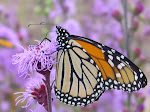LEGUMES
Native to Minnesota
These plants are beneficial to native plant gardens because they help enhance the nitrogen fixation in soils by soil rhizobium (beneficial bacteria). If we integrate these types of native plants with other native plants in residential "prairie gardens" or "savanna gardens" in increases the overall health and longevity of our gardens. These plants look great when planted in groups or clusters.
Blue Wild Indigo (Baptisia australis) Native to WI
Wild senna (Cassia hebecarpa) Native to WI
Hog peanut (Amphicarpaea bracteata)
Round headed bush clover (Lespedeza capitata)
False indigo (Amorpha fruticosa) Shrub
Leadplant (Amorpha canescens) Small Shrub
Purple prairie clover (Dalea purpureum)
Silky prairie clover (Dalea villosum)
Wild licorice (Glycyrrhiza lepidota)
Canada milkvetch (Astralagus canadensis)
Showy tick trefoil (Desmodium canadense)
Wild lupine (Lupinus perennis)
Prairie indigo (Baptisia bracteata)
Dwarf False Indigo (Amorpha nana)
Partridge Pea (Chamaecrista fasciculata)
13 November 2008
Corylus americana:

American Hazelnut (Corylus americana)
In the past year (2008) I have been asked many many times....
Q: Does this plant need to have a male and a female plant to cross pollinate in order to produce fruit?
A: No,this plant is monoecious. It has both sexes are on the same plant.
In the past year (2008) I have been asked many many times....
Q: Does this plant need to have a male and a female plant to cross pollinate in order to produce fruit?
A: No,this plant is monoecious. It has both sexes are on the same plant.
This plant is slow to develop at first. I recommend starting with a #5 container size (24"-30" ht.). It takes 4 to 5 years for this plant grow large enough to develop fruit (hazelnuts). This confuses many people who are eager to have fruit. This plant really needs to be in mostly sun during the day. If American Hazelnut is in too much shade it will produce little or no fruit. This confuses many people who are eager to have fruit. In the meantime, enjoy its structure, fall color and habitat cover until the fruit arrive.
More information is available at USDA.
http://www.plants.usda.gov/plantguide/pdf/pg_coam3.pdf
More information is available at USDA.
http://www.plants.usda.gov/plantguide/pdf/pg_coam3.pdf
Subscribe to:
Comments (Atom)

